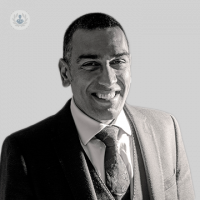When should I see a doctor about sciatica?
Autore:Sciatica is extremely common. Most people have a 80-90% chance of having back pain in their life time. Of these patients 1-3% go on to have sciatica. So what is it, how serious is the condition, and how can it be treated? We interviewed leading neurosurgeon Mr Sanj Bassi for the answers.

What is sciatica?
Sciatica usually occurs when a disc in the back "slips" and presses on the nerves that run down to the legs. The symptoms may start with mild back pain, however the most disturbing symptom is pain running down the leg. Although the pain is usually down the back of the leg it may occur in the front of the leg.
Patients often describe sciatica as the worst pain imaginable. Most people with sciatica find it hard to get comfortable in any one position for more than 10 minutes. As well as causing sciatica, a "slipped" disc can also cause tingling, pins and needles and numbness in the leg. In rare instances the nerve being pressed upon can stop working, causing weakness in the foot.
A disc usually slips to one side of the nerves or the other, however if the disc slips straight back into the middle it can press on the spinal cord and cause pain in both legs at the same time, problems with the bladder, bowels and sexual function.
If any of these symptoms occur the patient needs to be seen as an emergency, so as to preserve bladder and bowel function.
How is sciatica treated?
Initially it is reasonable to try simple pain killers such as paracetamol or ibuprofen, maintaining a good posture and ensuring one's weight is acceptable. These measures may relieve symptoms over the course of a few weeks.
If symptoms continue or progress, a neurosurgical opinion should be sought. You are likely to receive an MRI after a clinical examination. If the MRI shows a large disc pressing on the nerve root, this may need removing surgically if the symptoms are persistent.
Medical studies have shown that 75-80% of patients are free of leg pain after surgery, and 65-70% remain pain free after 5 years. Tingling may also improve. Unfortunately, if the sciatica progresses to numbness or weakness it is unlikely to improve, so timely treatment is paramount.


